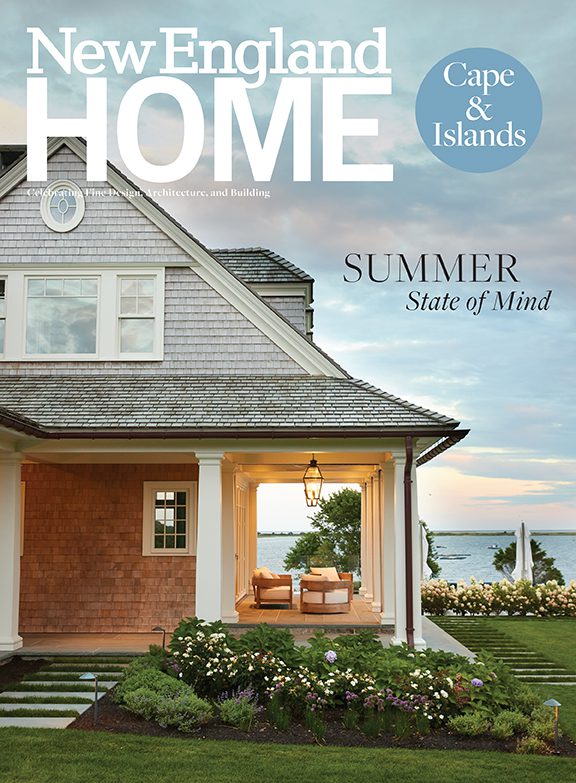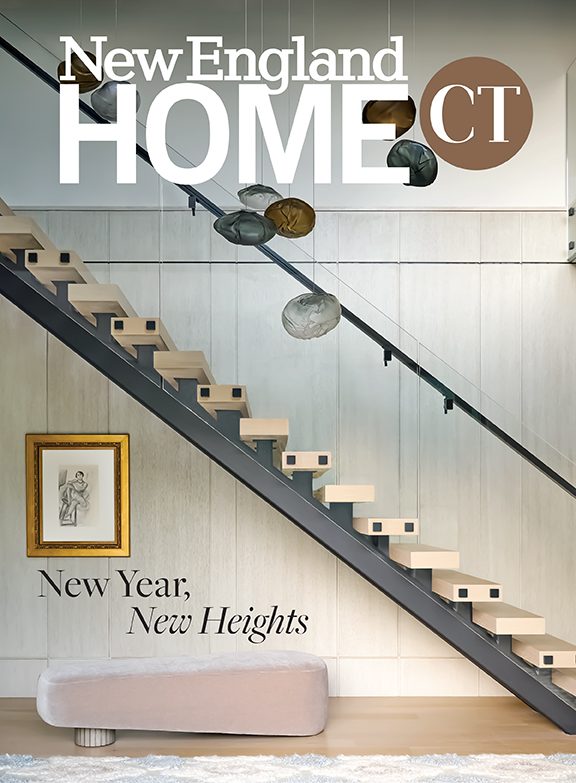The Merida Mystique
February 10, 2012
Text by Louis Postel
Catherine Connolly, the CEO of Merida, snapped up the giant jacquard loom at an auction in Lyon, France. Disassembled and crated back to Fall River, Massachusetts, it’s now in the hands of loom technician John Carvalho, who is busy putting Humpty Dumpty back together again—including all of the loom’s 12,000 needles. With eyelets no bigger than what you’d find in a hotel room’s complimentary sewing kit, they dangle down from the factory ceiling in a river of aqua thread. The project will require about a year of exacting work, the tension as palpable as the staccato thrumming of the other Merida looms. “You’ve got to thread each needle in exact order. One needle out of place and the whole thing will come apart,” says Carvalho.
Why is Merida adding looms when most of its competitors are long gone? In the 1870s, Fall River was second only to Manchester, England, in the textile industry. Thousands of people worked the spindles and looms of Fall River’s factories in that golden era. In the 1920s the industry went south, literally; labor was cheaper in Dixie. Today it’s even cheaper in Asia. Having rugs made in Asia is, indeed, less expensive, says Maegan Fee, Merida’s design director. “But we offer a very different experience, a blend of old-world skills and the high technology New Englanders are known for.”
A leader in sustainable contemporary rugs and flooring, Merida models itself as an R&D lab for designers. As opposed to factories dedicated to churning out product, Merida’s plants are committed to an ongoing creative dialogue. Inquiry, openness, partnership and community are all woven into Merida’s rugs. For example, should its peripatetic sustainability officer, Zairo Cheibub, find out one of the company’s partners or subcontractors around the world is using toxins, engaging child labor, underpaying or somehow exploiting its workers, he will not hesitate to end the relationship, even if the behavior saved money and was invisible to the consumer.
At this company, everyone and everything is interwoven. Ideas are valued at every level, from designers, architects and foremen to loom technicians, sewers, sisal cutters and shepherds. “We’re a learning organization that involves everyone in the company,” says Connolly. “Take Steven, for example, one of our sewers in Boston. Steven researched grommets on his own time, going to ten different stores downtown, e-mailing me photos. That’s typical.”
Merida sprang from humble roots, supplying sisal as a noise-dampening wallcovering in Mormon churches. Then, in 1978, Hiram Samel bought Merida from his relatives and began to experiment with what else the environmentally friendly plant could do. Soon enough, Samel worked out the many kinks involved in turning huge rolls of sisal broadloom into area rugs with bindings that would lie flat. From sisal, it was a short leap to wool. Today, the company’s 37,000-squre-foot Fall River plant is dedicated to manufacturing wool rugs, while the sisal side of the business is based in Boston.
Connolly is hardly one to stand idly by as Carvalho threads another of his needles. Along with Fee and marketing chief Whitney Palmedo, she is getting set to debut Merida’s fall collection at the Maison & Objet show in Paris. “Europe’s always sold fine rugs here, so it’s kind of nice to be selling there,” says Connolly.
She’s betting on the popularity of Fee’s Sweater collection to propel the new fall lineup. Samples from both lines march across the concrete floor in her office. The Sweater collection is so soft it requires a Herculean effort not to bury one’s face in the ivory-colored New Zealand wool. It has a wholesomeness, a richness that goes beyond soft; like all of Merida’s products, it’s also very green, without a hint of the toxic adhesives, bleaching agents, dyes or formaldehyde so common today.
Inspired by the Sweater collection, the new fall offerings experiment with highly textured, monochromatic constructions, but they also represent a departure. Fee has combined undyed wool with thin and thick felted wools to create rugs in pleasing stripes, basket weaves and lattice designs inspired by old window grates Fee saw on trips to Europe.
“We’re hoping to start a renaissance in weaving here in America,” says Fee.
“By applying innovative thinking to traditional skills, we can see it happen,” adds Connolly, who’s off to Paris to present Merida’s uniquely sustainable, cuddly rugs to the Old World.
Share
![NEH-Logo_Black[1] NEH-Logo_Black[1]](https://b2915716.smushcdn.com/2915716/wp-content/uploads/2022/08/NEH-Logo_Black1-300x162.jpg?lossy=1&strip=1&webp=1)













You must be logged in to post a comment.